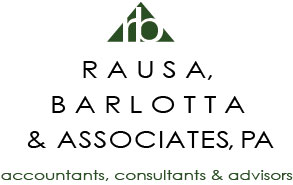Year-End Tax Planning – Part I
By Steve Barlotta, CPA
 Well, it’s that time once again. With December upon us, it’s a good idea to look into some last minute tax-savings strategies. Part I of our year-end tax planning letter will focus on the individuals that were impacted by the several tax increases that went into effect for 2013.
Well, it’s that time once again. With December upon us, it’s a good idea to look into some last minute tax-savings strategies. Part I of our year-end tax planning letter will focus on the individuals that were impacted by the several tax increases that went into effect for 2013.
As we have discussed throughout the year, high-income earners were hit with a combination of federal tax increases for 2013. The top marginal tax rate was increased from 35 percent to 39.6 percent. The tax rate on long-term capital gains and dividends went from 15 percent to 20 percent. And two Obamacare taxes were instituted as well; a 3.8% Obamacare surtax on investment income and a .9% levy on earned income. On top of this, limits on exemptions and itemized deductions for upper-income taxpayers went into effect for 2013. When you take into account state tax rates, certain earners in New Jersey and New York could see their total effective rates increase close to 50%.
It’s safe to say that many of these individuals will be startled when they realize the amount of additional taxes they are paying for 2013. Here are a few ideas that might alleviate the tax bite for 2013:
- Because of the new top rates, some taxpayers will no longer be subjected to the alternative minimum tax. Individuals that are not affected by the AMT, can pre-pay state income taxes or real estate taxes before December 31st.
- Increasing your charitable donations is another strategy. Taxpayers with unrealized gains in publicly traded stocks and bonds can donate them to a public charity. The charitable donation would be equal to the fair value of the security on the date of the contribution. In addition, individuals 70 1/2 or older can give as much as $100,000 to a qualified charity directly from their individual retirement accounts. By making these types of donations, long-term capital gains at the higher rates would be lessened.
- If you’re anticipating a significant amount of capital gains because of stock sales or long-term capital gains distributions from your mutual fund company, consider selling some investments in your portfolio that are losses to help mitigate the impact of the long-term capital gains tax. In addition, if you have any investments that are determined to be worthless, these too can used to lower your capital gains.
- Continue to maximize contributions to your retirement plans. If you own a business, consider setting up a defined benefit plan before the end of 2013. Many defined benefit plans allow the owners of a business to contribute pension dollars in excess of the maximum allowed amounts for defined contribution plans ($51,000 for 2013).
- Individuals can also defer investment income by investing in non-qualified fixed or variable annuities. You need to be careful with these types of products; be certain that the amounts invested won’t be needed in the short-term and be aware of the surrender charges of the policy in the event that you liquidate the annuity early.
Looking ahead to 2014, high-income taxpayers with substantial investments should consider adding tax-exempt bonds to their portfolio. Also, think about converting some of your retirement savings to Roth accounts. Remember when putting money into a Roth IRA and Roth 401(k), taxes must be paid upfront on the conversion, but you’ll be able to withdraw the money out later tax-free.
Please give us a call with any questions or concerns.



